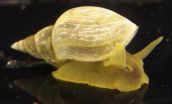(Press-News.org) A team of researchers in the University of Arizona's College of Pharmacy has discovered a molecular pathway that could be key to creating new therapeutics that would slow or even reverse the progression of end-stage liver disease.
Although cirrhosis of the liver is most commonly associated with alcohol or drug abuse, the condition – marked by scar tissue replacing healthy liver tissue – also can result from viral hepatitis, obesity and diabetes, as well as certain inherited diseases. According to the National Institutes of Health, cirrhosis is the 12th leading cause of death by disease in the U.S.
As with many other human pathologic conditions, end-stage liver disease goes hand in hand with oxidative stress, which refers to damage inflicted to biological tissues by reactive oxygen molecules. Such molecules, also called free radicals, occur naturally as a byproduct of metabolic processes in the body and are associated with many chronic diseases including cancer, diabetes, neurodegenerative and cardiovascular diseases.
"Cells keep oxidative stress under control through various mechanisms," said Donna Zhang, a professor in the UA Department of Pharmacology and Toxicology, explaining that most of these mechanisms involve Nrf2, a protein present in virtually every cell that acts as a molecular switch. Nrf2 activates various biochemical mechanisms inside the cell that capture reactive oxygen molecules or dispose of damaged cellular components before they can cause more trouble. The antioxidants found in many fruits and vegetables exert their healthful benefits by capturing reactive oxygen molecules.
Under normal, healthy conditions, when no oxidative stress response is needed, an enzyme called Keap1 constantly chews up Nrf2, keeping its level low.
"Then, under stress from reactive oxygen molecules, or when you eat antioxidants from certain plants like broccoli sprouts, it prevents Keap1 from eating up Nrf2, allowing it to accumulate in the cell," explained Zhang, who is also a member of the UA BIO5 Institute. "Nrf2 then activates the cellular antioxidant response. That is how antioxidants work."
According to conventional wisdom, our bodies turn on their Nrf2-mediated protection pathway when subjected to high oxidative stress to limit the damage from the destructive oxygen compounds. During liver cirrhosis, Nrf2 should be induced by oxidative stress, but for reasons unclear until this study, this does not happen.
"This was a puzzle before we did our study," she said. "Somehow the protective mechanism mediated by Nrf2 is compromised by another factor, other than Keap1, in liver cirrhosis."
Adding to the mystery is the fact that drugs aimed at inhibiting Keap1 from chewing up Nrf2 have proven ineffective in a cirrhotic liver.
When Zhang and her colleagues studied tissue samples from a human cirrhotic liver, they discovered the reason behind the inexplicably low Nrf2 levels in the face of rampant oxidative stress.
It turned out that another enzyme chews up Nrf2 and prevents the much-needed antioxidant response, exacerbating the disease process. That protein, Hrd1, is part of the cells' garbage disposal – it specializes in destroying misfolded proteins before they can accumulate and damage cell components.
Under normal conditions, Hrd1 levels are low, so it does not interfere much with Nrf2, explained Zhang. As liver cirrhosis progresses, excessive inflammation triggers the garbage-mediated stress response and Hrd1 becomes very abundant and begins chewing up Nrf2.
The study is published in the April 1 issue of the journal Genes and Development. The first author of the report is Tongde Wu, a graduate of the UA Department of Pharmacology and Toxicology, who developed the project as part of her dissertation research. Fei Zhao and Eli Chapman, in the same department, also contributed to the research. The work resulted from a collaboration between Zhang's research group and Deyu Fang, Beixue Gao and Can Tan at Northwestern University Feinberg School of Medicine in Chicago. Other contributors are Naoko Yagishita and Toshihiro Nakajima of St. Marianna University School of Medicine in Kawasaki, Japan, and Pak K. Wong of the UA College of Engineering.
The discovery could change the way scientists develop therapeutics, as it provides a new target for future drugs. In laboratory experiments, Zhang and her colleagues were able to restore Nrf2 levels in cirrhotic liver tissue by inactivating Hrd1, effectively reversing liver cirrhosis in mice.
"Previous efforts only focused on the Keap1 protein and tried to prevent it from breaking down Nrf2," Zhang said. "Now we know there is a second player in the game – Hrd1 – that we need to inhibit in order to restore Nrf2 levels.
"Boosting Nrf2 is good for protection in general, which is why you should always eat your broccoli," she stressed.
INFORMATION:
The study, "Hrd1 suppresses Nrf2-mediated cellular protection during liver cirrhosis," is published in the April 1 issue of the journal Genes and Development: http://genesdev.cshlp.org/content/28/7/708.abstract
Scientists at the UA make critical end-stage liver disease discovery
The discovery of an unknown cellular pathway has helped scientists and physicians better understand end-stage liver disease and offers a potential target for new therapeutics
2014-04-25
ELSE PRESS RELEASES FROM THIS DATE:
Biologists discover a key regulator in the pacemakers of our brain and heart
2014-04-25
Biologists have discovered how an outer shield over T-type channels change the electrochemical signaling of heart and brain cells. Understanding how these shields work will help researchers eventually develop a new class of drugs for treating epilepsy, cardiovascular disease and cancer.
The study from the University of Waterloo is published in the Journal of Biological Chemistry today and is featured as the "Paper of the Week" for its significance.
The researchers discovered T-type channels in the pond snail, Lymnaea stagnalis, can shift from using calcium ions to ...
Study finds almost half of homeless men had traumatic brain injury in their life
2014-04-25
TORONTO, April 25, 2014—Almost half of all homeless men who took part in a study by St. Michael's Hospital had suffered at least one traumatic brain injury in their life and 87 per cent of those injuries occurred before the men lost their homes.
While assaults were a major cause of those traumatic brain injuries, or TBIs, (60 per cent) many were caused by potentially non-violent mechanisms such as sports and recreation (44 per cent) and motor vehicle collisions and falls (42 per cent).
The study, led by Dr. Jane Topolovec-Vranic, a clinical researcher in the hospital's ...
Genome regions once mislabeled 'junk' linked to heart failure
2014-04-25
Large sections of the genome that were once referred to as "junk" DNA have been linked to human heart failure, according to research from Washington University School of Medicine in St. Louis.
So-called junk DNA was long thought to have no important role in heredity or disease because it doesn't code for proteins. But emerging research in recent years has revealed that many of these sections of the genome produce RNA molecules that, despite not being proteins, still have important functions in the body. RNA is a close chemical cousin to DNA.
Molecules now associated ...
'Beneficial inflammation' may promote healing in pulmonary fibrosis
2014-04-25
Inflammation has long been considered an integral part of the biological process that leads to deadly scarring in idiopathic pulmonary fibrosis. New research at National Jewish Health, however, suggests that a little inflammation may also be crucial to the healing and repair processes in the lungs. Elizabeth Redente, PhD, assistant professor of cell biology at National Jewish Health, and her colleagues report in the April 2014 issue of the American Journal of Respiratory Cell and Molecular Biology that the pro-inflammatory cytokine TNF-α can speed recovery of injured ...
Buzz and Bite Highlighted In New Malaria Museum
2014-04-25
Chocolate Moose Media's Buzz and Bite public service announcements (PSA) have had a profound effect combatting the spread of malaria around the world. Now the series will be featured in a new museum in Dublin, Ireland, dedicated to malaria.
Buzz and Bite comprises 30 animated spots of either 30 or 60 seconds that feature two female anopheles (malaria-carrying) mosquitos. Creator and company president Firdaus Kharas uses humour as the two winged characters try to infect every human on the planet. The series teaches about the value of insecticide-treated sleeping nets ...
Revolutionary 'metamaterial' has potential to reshape neurosurgery
2014-04-25
Philadelphia, Pa. (April 25, 2014) – The development of graphene—a highly advanced metamaterial with many unique and varied properties—may lead to exciting new applications in the diagnosis and treatment of neurological diseases, according to a report in the May issue of Neurosurgery, official journal of the Congress of Neurological Surgeons. The journal is published by Lippincott Williams & Wilkins, a part of Wolters Kluwer Health.
Tobias A. Mattei, MD, of Invision Health/Brain & Spine Center – Buffalo, New York and Azeem A. Rehman, BS, of The University of Illinois ...
It's not all wedded bliss: Marital stress linked to depression
2014-04-25
MADISON, Wis. – Marital stress may make people more vulnerable to depression, according to a recent study by University of Wisconsin-Madison researchers and their colleagues.
The long-term study, published in the April 2014 Journal of Psychophysiology, shows that people who experience chronic marital stress are less able to savor positive experiences, a hallmark of depression. They are also more likely to report other depressive symptoms.
The findings are important, says study leader Richard Davidson, UW-Madison William James and Vilas Professor of Psychology and Psychiatry, ...
Fires in the Yucatan Peninsula in April 2014
2014-04-25
April is in the middle of the dry season, which runs from January through May in this region, and naturally coincides with fire season. Farmers often use fire to return nutrients to the soil and to clear the ground of unwanted plants. Fire helps enhance crops and grasses for pasture. Some of the fires in this image may be wildfires, with natural (lightning) or accidental (human) sources. As the dry season progresses, the number of fires tend to grow, as does the blanket of smoke which settles over the land, and although the fire may help the farmers get their lands ready ...
Function found for mysterious heart disease gene
2014-04-25
OTTAWA, April 24, 2014 - A new study from researchers at the University of Ottawa Heart Institute (UOHI), published today in Cell Reports, sheds light on a mysterious gene that likely influences cardiovascular health. After five years, UOHI researchers now know how one genetic variant works and suspect that it contributes to the development of heart disease through processes that promote chronic inflammation and cell division.
Researchers at the Ruddy Canadian Cardiovascular Genetics Centre had initially identified a variant in a gene called SPG7 as a potential contributor ...
Study finds almost half of homeless men had traumatic brain injury in their
2014-04-25
TORONTO, April 25, 2014—Almost half of all homeless men who took part in a study by St. Michael's Hospital had suffered at least one traumatic brain injury in their life and 87 per cent of those injuries occurred before the men lost their homes.
While assaults were a major cause of those traumatic brain injuries, or TBIs, (60 per cent) many were caused by potentially non-violent mechanisms such as sports and recreation (44 per cent) and motor vehicle collisions and falls (42 per cent).
The study, led by Dr. Jane Topolovec-Vranic, a clinical researcher in the hospital's ...
LAST 30 PRESS RELEASES:
Making lighter work of calculating fluid and heat flow
Normalizing blood sugar can halve heart attack risk
Lowering blood sugar cuts heart attack risk in people with prediabetes
Study links genetic variants to risk of blinding eye disease in premature infants
Non-opioid ‘pain sponge’ therapy halts cartilage degeneration and relieves chronic pain
AI can pick up cultural values by mimicking how kids learn
China’s ecological redlines offer fast track to 30 x 30 global conservation goal
Invisible indoor threats: emerging household contaminants and their growing risks to human health
Adding antibody treatment to chemo boosts outcomes for children with rare cancer
Germline pathogenic variants among women without a history of breast cancer
Tanning beds triple melanoma risk, potentially causing broad DNA damage
Unique bond identified as key to viral infection speed
Indoor tanning makes youthful skin much older on a genetic level
Mouse model sheds new light on the causes and potential solutions to human GI problems linked to muscular dystrophy
The Journal of Nuclear Medicine ahead-of-print tip sheet: December 12, 2025
Smarter tools for peering into the microscopic world
Applications open for funding to conduct research in the Kinsey Institute archives
Global measure underestimates the severity of food insecurity
Child survivors of critical illness are missing out on timely follow up care
Risk-based vs annual breast cancer screening / the WISDOM randomized clinical trial
University of Toronto launches Electric Vehicle Innovation Ontario to accelerate advanced EV technologies and build Canada’s innovation advantage
Early relapse predicts poor outcomes in aggressive blood cancer
American College of Lifestyle Medicine applauds two CMS models aligned with lifestyle medicine practice and reimbursement
Clinical trial finds cannabis use not a barrier to quitting nicotine vaping
Supplemental nutrition assistance program policies and food insecurity
Switching immune cells to “night mode” could limit damage after a heart attack, study suggests
URI-based Global RIghts Project report spotlights continued troubling trends in worldwide inhumane treatment
Neutrophils are less aggressive at night, explaining why nighttime heart attacks cause less damage than daytime events
Menopausal hormone therapy may not pose breast cancer risk for women with BRCA mutations
Mobile health tool may improve quality of life for adolescent and young adult breast cancer survivors
[Press-News.org] Scientists at the UA make critical end-stage liver disease discoveryThe discovery of an unknown cellular pathway has helped scientists and physicians better understand end-stage liver disease and offers a potential target for new therapeutics





